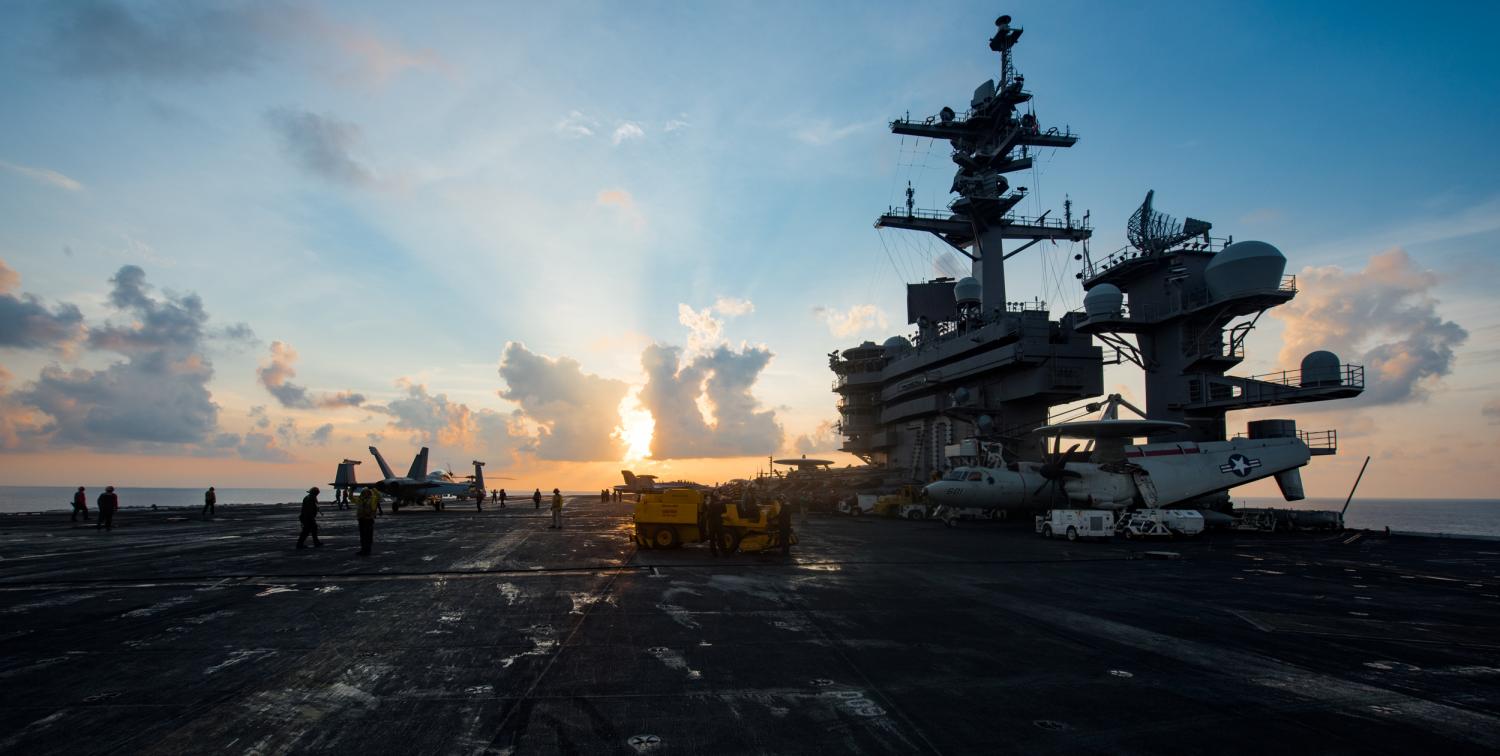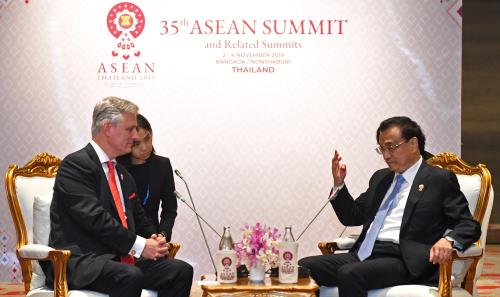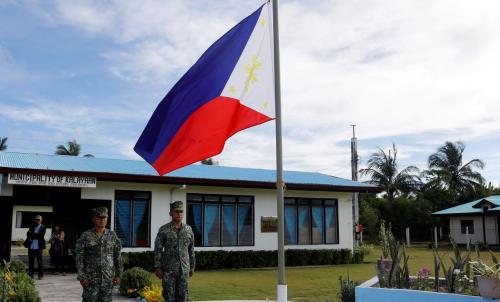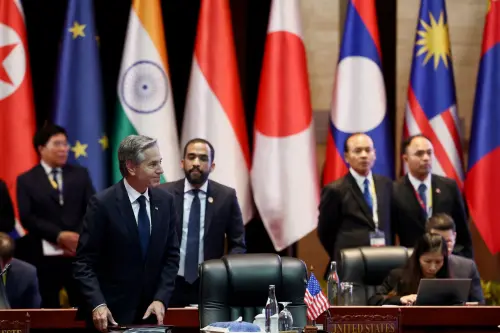EXECUTIVE SUMMARY
China’s rise over the past decade has represented both a rapid shift in the regional balance of power and a direct assault on the legitimacy of the U.S.-led liberal international order. China is not only introducing ambitious multilateral economic initiatives like the Belt and Road Initiative (BRI), but is also expanding its military muscle through land reclamation and weaponization of artificial islands in the South China Sea. This is nothing short of an insidious assault on the foundations of the post-war liberal international order in East Asia, likely part of a grand strategy of creating a parallel Sino-centric order in Beijing’s immediate neighborhood. So how should we respond?
Given China’s centrality to the global economy and indispensability to the vitality of regional trade and investment flows — not to mention its entwinement with a thick network of regional cooperative mechanisms — Cold War-style “containment” is not an option, both normatively as well as materially. Instead, likeminded regional and international powers should opt for a strategy of “constrainment,” namely the calibrated and decisive deployment of a combination of diplomatic, economic, and military tools to check Beijing’s worst instincts, encourage its best intentions, and incentivize responsible leadership in the international system. China is neither inherently a disruptive power, nor is naturally inclined to work within the parameters of the liberal international order. Thus, an optimal response is a so-called Goldilocks approach of not-too-hot deterrence (against disruptive behavior) as well as not-too-cold encouragement (of good behavior) by the international community. Like any major reflexive power, China’s international behavior is a dialectical outcome of its interface with the rest of the world, especially other major powers and key regional neighbors.
So what to make of the Trump administration’s strategy, so far? In many ways, Washington’s Free and Open Indo-Pacific (FOIP) strategy — as a combination of diplomatic pressure, economic cooperation, and deepening military countermeasures vis-à-vis China — carried out in tandem with likeminded powers that are likewise perturbed by Beijing’s challenge to the existing order, is an exercise in constrainment. But there is huge room for improvement. The Indo-Pacific and FOIP discourse is often viewed skeptically in Southeast Asia as a thinly-veiled containment strategy against China by Washington and the other members of the so-called “Quad” (Australia Japan, India, and the U.S.). The Association of Southeast Asian Nations (ASEAN), as an organization, and the vast majority of Southeast Asian states categorically reject any narrow definition of China as a hegemonic threat that has to be contained by a counter-coalition of powers. Instead, almost all neighboring countries see Beijing as an “indispensable stakeholder” that should be engaged on an institutionalized, if not conciliatory, basis through ASEAN and other multilateral mechanisms. In this evolving regional context, the ASEAN Outlook on the Indo-Pacific (AOIP) is a defensive attempt at reasserting ASEAN centrality, and the importance of engaging smaller and middle powers of Asia. But instead of just asserting centrality, the ASEAN should also achieve and earn a pivotal role in shaping the emerging 21st-century order in the Indo-Pacific. The reality is that the ASEAN’s refusal to choose on pivotal geopolitical issues, especially the South China Sea disputes and the predatory practices under the BRI, represents a choice itself, potentially leading to its peripherality in regional affairs. Thus, there is a need for close minilateral cooperation between likeminded powers of the U.S., Japan, India, Australia, and key ASEAN members, especially Singapore, Vietnam, Indonesia, Malaysia and the Philippines





